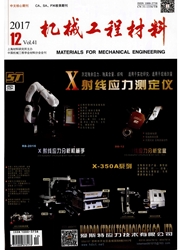

 中文摘要:
中文摘要:
考虑实际焊接中热-机械的直接耦合效应,通过热-弹塑性有限元法建立三维有限元模型来研究不同焊接顺序对薄壁6061铝合金焊件焊后残余应力分布的影响,采用单道TIG焊接实验来验证模拟结果的准确性;利用九种不同的焊接顺序来研究八边形管和底板之间焊后残余应力的分布状态。结果表明,焊缝及其附近存在的初始残余应力并不影响最终残余应力的分布;选择合理的焊接顺序可以有效降低八边形管-板接头的残余应力。
 英文摘要:
英文摘要:
A three-dimensional finite element approach based on ABAQUS code was developed to investigate the effect of welding sequence on welding residual stress distribution in a thin-walled 6061 aluminum alloy structure. To obtain sound numerical results, the therrno-mechanical behaviour was simulated using a direct-coupled formulation. Nine different simulation sequences were carried out by single-pass TIG welding of an octagonal pipe-plate joint, and the distributions of longitudinal and transverse residual stresses both on the outer and inner surfaces of the pipe were analyzed. The results suggest that the final residual stresses in the weld and its vicinity are not affected by the initial residual stresses of the structure. Selecting a suitable welding sequence can reduce the final residual stress in an octagonal pipe-plate joint.
 同期刊论文项目
同期刊论文项目
 同项目期刊论文
同项目期刊论文
 期刊信息
期刊信息
